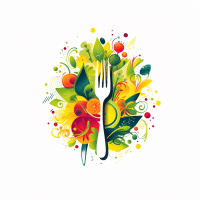Moroccan Lamb Tagine (or Tajine) is a traditional North African dish that has been passed down through generations. The rich flavors, aromatic spices, and succulent lamb, all cooked in a unique clay pot called a tajine, make this dish a favorite for many.
Whether you’ve tasted it on the streets of Marrakech or are new to Moroccan cuisine, this dish is sure to captivate your senses.
Is Moroccan Lamb Tagine Spicy?
While Moroccan Lamb Tagine boasts a symphony of spices, it is not necessarily “spicy” in terms of heat. The spices used, like cumin, paprika, and saffron, impart depth and richness without overwhelming the palate with heat.
However, some variations may include ingredients like cayenne pepper or harissa to add a kick. Always check the ingredients or ask the chef if you prefer a milder version.
Cooking Moroccan Lamb Tagine involves a few key steps:
- Marination: Season the lamb with a blend of spices and let it marinate for an hour or overnight for enhanced flavor.
- Searing: Using a tagine or a heavy-bottomed pan, sear the meat to lock in its juices.
- Slow-Cooking: Add the remaining ingredients like fruits, vegetables, and broth. Cover the tagine and let it simmer on a low flame or in a preheated oven.
- Garnishing: Once cooked, garnish with fresh herbs, soaked raisins, or nuts for added texture and flavor.
What to Serve with Traditional Moroccan Lamb Tagine?
Traditional Moroccan Lamb Tajine is traditionally served with couscous, a type of North African semolina granules that soak up the rich flavors of the stew perfectly. Other accompaniments include fresh bread to scoop up the savory juices, a side of mint tea, or a refreshing Moroccan salad with oranges and olives.
For a more diverse spread, consider pairing it with roasted vegetables, rice pilaf, or even a yogurt-based dip or sauce.
Are Moroccan Tagines Healthy?
Moroccan tagines, named after the earthenware pots they are cooked in, are a cornerstone of North African cuisine. These slow-cooked stews are often a medley of meats, vegetables, fruits, and a plethora of spices. But how do they fare on the health spectrum?
- Nutrient-Rich Ingredients: Tagines often incorporate a variety of vegetables like bell peppers, tomatoes, zucchinis, and carrots. These ingredients not only infuse the dish with flavor but also pack it with essential vitamins and minerals.
- Lean Proteins: Many tagines use lean cuts of meat, such as lamb loin chops or chicken breasts. These provide a good amount of protein without an excessive amount of fat. Additionally, there are vegetarian and vegan tagine variations that incorporate legumes like lentils and chickpeas, which are excellent sources of plant-based protein.
- Healthy Fats: Traditional tagines might use olive oil, known for its heart-healthy fats. The inclusion of nuts, like almonds or walnuts in some recipes, adds omega-3 fatty acids, which are beneficial for heart health.
- Beneficial Spices: Moroccan cuisine is renowned for its use of spices like turmeric, cumin, ginger, and saffron. These spices are not only flavor enhancers but also have various health benefits. For instance, turmeric has anti-inflammatory properties, and ginger aids in digestion.
- Low in Processed Sugars: While tagines often have a sweet undertone, thanks to ingredients like dates, apricots, or raisins, they typically don’t contain high amounts of processed sugars. The natural sweetness from fruits offers a healthier sugar alternative.
- Controlled Sodium Levels: Homemade tagines allow you to control the salt content, making it easier to create a dish that’s flavorful without being overly salty.
However, it’s essential to note the following:
- Portion Control: Like any dish, moderation is crucial. While tagines are nutritious, it’s essential to consume them in reasonable portions, especially if they contain higher-fat ingredients or are paired with bread or couscous.
- Variations: The health benefits of a tagine can vary based on its specific recipe. For instance, a tagine rich in red meat and lacking vegetables might not be as healthful as one brimming with veggies and lean protein.
In conclusion, Moroccan tagines can be a healthy addition to one’s diet, especially when made with a balance of protein, vegetables, and beneficial spices. As always, it’s essential to enjoy them as part of a varied and balanced diet.



u003cstrongu003eWhat is the significance of the tagine pot in Moroccan cuisine?u003c/strongu003e
The tagine pot, made of clay or ceramic, is not just a cooking vessel but a symbol of Moroccan culinary heritage. Its unique conical lid allows for steam to circulate, ensuring that the ingredients inside remain moist and flavorful. The slow cooking in a tagine melds flavors together and creates a tender dish with a concentrated essence.
u003cstrongu003eCan I make Moroccan Lamb Tajine without the traditional tagine pot?u003c/strongu003e
Yes, you can! While the tagine pot offers a unique cooking experience, you can use a heavy-bottomed pot or Dutch oven as an alternative. Ensure the pot has a tight-fitting lid to keep the steam and flavors locked in.
u003cstrongu003eWhat cuts of lamb are best suited for this dish?u003c/strongu003e
Lamb loin chops or shanks are often recommended due to their tenderness and flavor. However, you can use other cuts like the shoulder, which becomes incredibly tender when slow-cooked. The choice of cut may vary based on personal preference and availability.
u003cstrongu003eHow can I make my Moroccan Lamb Tagine vegetarian or vegan?u003c/strongu003e
For a vegetarian or vegan version, replace the lamb with hearty vegetables like eggplant, zucchini, and bell peppers. Chickpeas or lentils can also be added for protein. Ensure you use a vegetable broth instead of meat broth to keep it authentic to the vegetarian or vegan preference.
u003cstrongu003eHow do I store leftover Moroccan Lamb Tagine?u003c/strongu003e
Leftover Moroccan Lamb Tagine can be transferred to an airtight container and stored in the refrigerator for up to 3-4 days. For longer storage, consider freezing it. Before serving, reheat it on the stove over low heat, adding a little water or broth if it’s too thick.















